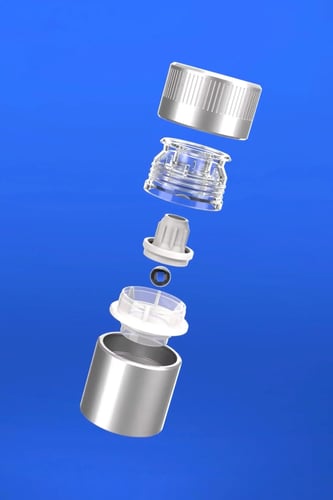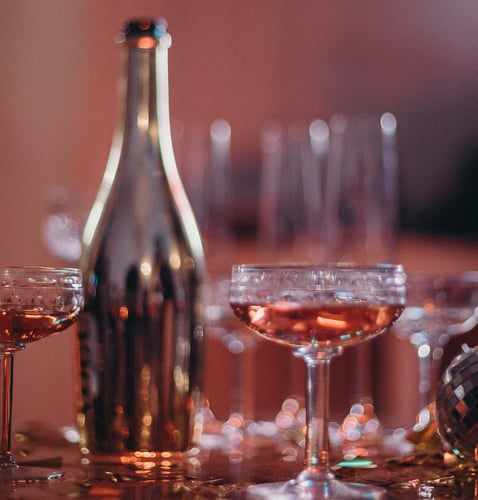The Different Types of Wine Bottle Closure

Types of Wine Bottle Closure
The selection of wine bottle closures is critical. A bottle of wine symbolizes a full viticultural year, plus whatever long the wine was cared for and matured at the winery, not to mention the many years of investment in the wine’s vineyards before that particular yearly cycle. A bottle of wine also symbolizes a winery and the people who labor behind the scenes, from idea to grape cultivation and winemaking to shipping and marketing.
Is it that important? Yes, it most definitely is! It’s natural to think that “a cork is a cork is a cork,” but this is not the case.
Different Wine Closures Affect Our Wine-Drinking Experiences in Two Ways
Opening and Closing Wine Bottles
Various wine closures influence how readily we can reach the wine we wish to consume. Screw caps, Zork closures, and sparkling wine “mushroom top corks” win for instant gratification since they don’t need the use of a corkscrew to remove the closure, and all other wine bottle closures need the use of a tool. We also need to know how to utilize that tool.
When we save a portion of a bottle for later use, getting the closure back into the bottle isn’t always simple. Screw caps, VinoSeal/Vino-lok, and Zork tops all readily fit back onto a bottle, but other cork-like closures aren’t always as accommodating. Technical and synthetic corks may be difficult to re-insert into the bottle. It occurs because all corks are considerably bigger than the aperture of a wine bottle. Corks are tightly squeezed on a bottling line before being put into their bottles and expanding against the walls of their new glass homes. They expand again when the corks are removed, similar to how humans do after a long trip! Natural corks are the most flexible, and since they re-expand more slowly, the non-wine end of a natural cork is generally simpler to place back into the bottle.
Wine Aromas
Second, even when wines are intended to be as neutral as possible, the different wine closure styles impact the aromatic characteristics of the wines. One of the primary motivations for abandoning natural cork-closed wines was to eliminate unpleasant cork taint. For the most part, synthetic corks are composed of petroleum-based materials and may function similarly to natural corks. On the other hand, technical corks are bonded together and may emit a chemical odor to sensitive ones. This off-gassing of technical and synthetic corks is particularly apparent in lighter whites and reds. Finally, different closures such as wine bottle screw tops and glass may help winemakers produce a scent known as reduction. The stench of the reduction is lighter, like struck match or sulfur, and it generally disappears fast. On the negative side, the reduction has a terrible stench similar to rubber or rotten eggs, and it never goes away.
Wine closures affect wine’s age-ability
Apart from the risk of cork taint, one of the most active factors for choosing alternative or artificial corks in the past two decades has been oxygenation potential. The rate of oxygen exchange through a wine bottle is influenced by how it is sealed. This is important because, like the renowned French scientist Louis Pasteur, oxygen is the main accelerator of wine aging. After all, oxygen is meticulously regulated throughout the winemaking process, so why shouldn’t it be considered once the wine is ready for shipment to the consumer?
Wine’s color, aroma, and mouthfeel are all affected by oxygen.
Too much oxygen may cause premature browning. Take, for example, the oxidation of a sliced apple.
Aroma – In young wines, a small amount of oxygen may promote appealing growth. Excessive usage produces oxidation, which dulls and dulls the liveliness of the nose.
Mouthfeel — A healthy dose of air softens the tongue, which is particularly essential in tannin-heavy wines.
Winemakers are aware of this and work hard to ensure that their wines be drunk within their ideal drinking windows. That is, they go out of their way to guarantee that the bottle you open today will drink as good as it possibly can. For most cork substitutes, a winemaker may choose an optimal oxygen transferability rate. Consequently, the same wine might be planned to peak six, twelve, and twenty-four months after release if it was bottled with various closures with varying oxygen transferability rates. Winemakers may select corks to work overtime within a bottle, similar to a decanter for a freshly opened wine. Presto Bingo is all about having a unique experience while doing the same thing!



